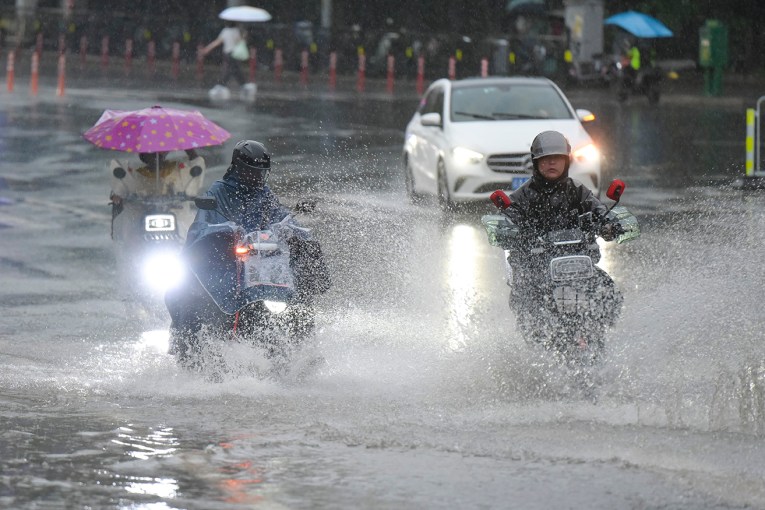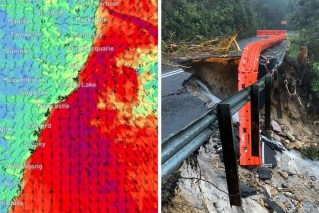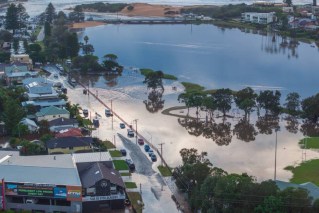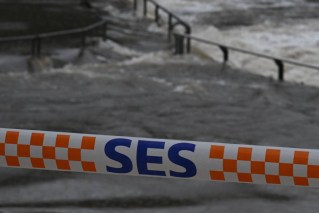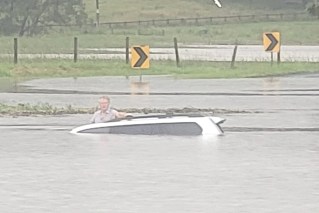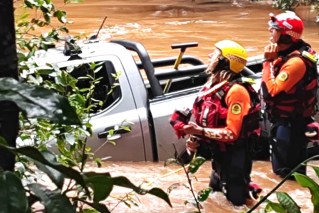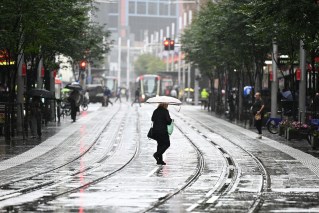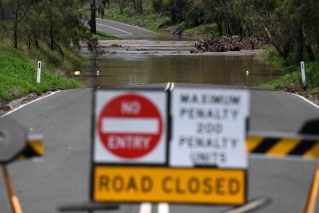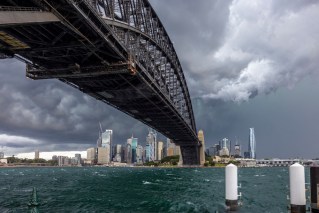‘Unbearable’: Parts of Australia brace for extreme heat as grassfire strikes Melbourne’s fringe

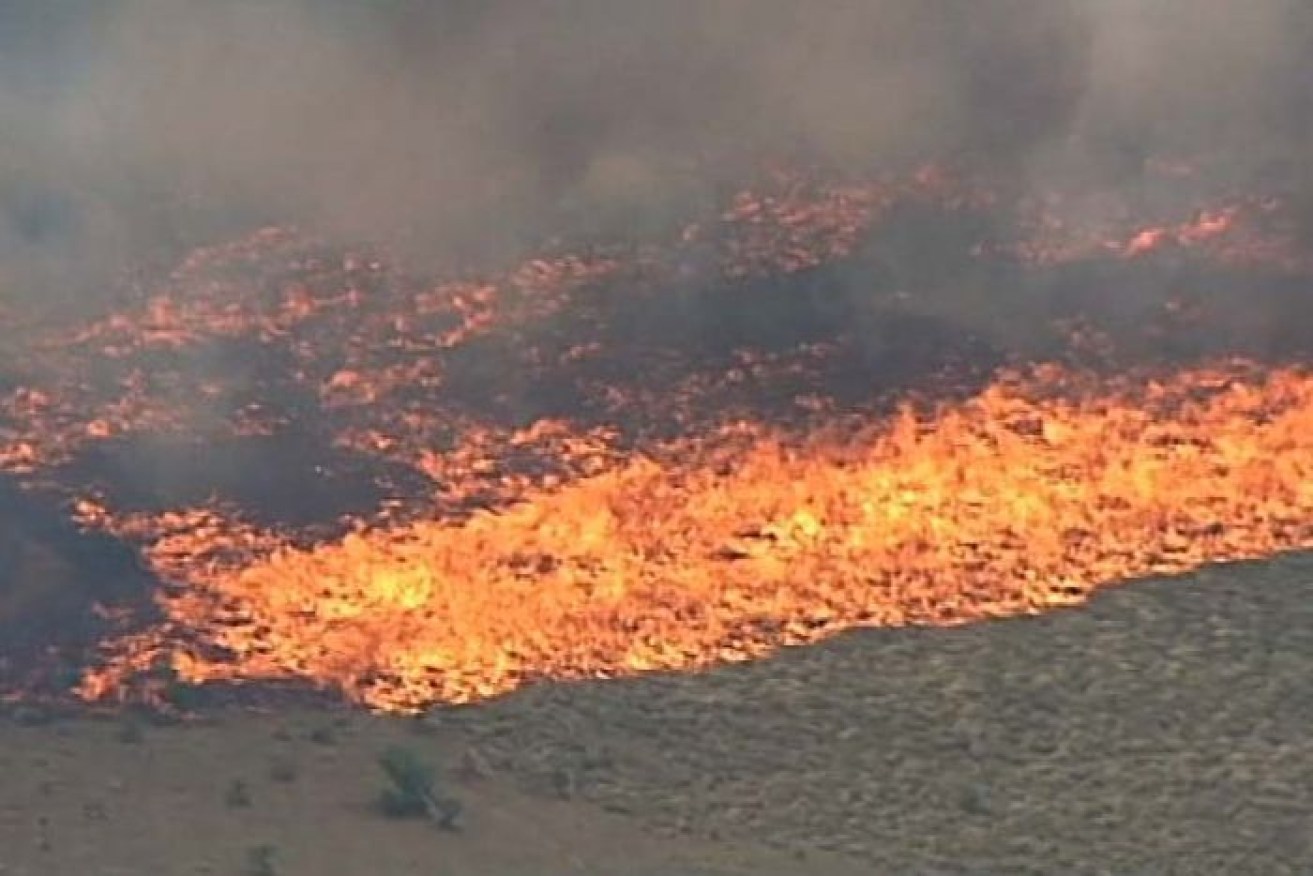
Residents near Little River have been urged to monitor local conditions. Photo: ABC News
A total fire ban remains in place for parts of Victoria, South Australia and Western Australia with temperatures set to hit an “unbearable” 47 degrees in tropical Western Australia ahead of a three-day heatwave.
In Melbourne’s CBD, the temperature pushed 40 degrees at 3.13pm degrees and 40 degrees in northwest parts of the state.
In the past 24 hours, up to 200 firefighters have been dispatched to bushfires which erupted near Ballarat in Victoria and on Kangaroo Island in South Australia on Thursday.
The high temperatures and bushfire threats come as an inquiry was ordered into vegetation management after the recent devastating Queensland bushfires.
The weather bureau warns Victoria is set to experience its hottest start to summer in 24 years.
Today has been declared a day of Total Fire Ban in the Mallee, Wimmera and Northern Country districts of Victoria. Stay informed at https://t.co/ZPPF6Cx6lW #VicFires pic.twitter.com/iOSjcRr0eF
— cfa_updates (@CFA_Updates) December 6, 2018
Residents on Melbourne’s south-western fringe have been issued with an advice warning as a 600-hectare grassfire continues to burn amid heatwave conditions.
The fire, which reportedly started in a paddock about 12.30pm on Friday, quickly spread and threatened residents in Manor, Mambourin, Cocoroc and Little River near Werribee.
Residents were urged to monitor conditions and stay informed after earlier emergency warnings to evacuate.
CFA incident controller Geoff McGill told ABC Radio Melbourne the fire was being treated as suspicious.
“I don’t want to make any assumptions at this stage … but yes it is disappointing if it’s found out to be deliberate,” he said.
Health alerts have been issued for west and south Gippsland and the Wimmera, as the state government warns of “forecast extreme heat conditions at or above heat health temperature thresholds”.
“There is a change coming, every heatwave has to end eventually, however this is not a very strong change,” Bureau of Meteorology senior forecaster Chris Godfred said.
“We should see it reach Melbourne very late on Friday night so unfortunately we’re not going to get real relief from the heat until Saturday.”
Possible elevated storms in the afternoon and evening for parts of Western #Vic with the arrival of the trough. Surface based storms possible for the eastern parts of Gippsland this afternoon.
Check the forecast at https://t.co/inHDv0mfVG pic.twitter.com/Ltt7vLTt9j— Bureau of Meteorology, Victoria (@BOM_Vic) December 7, 2018
Firefighters have brought under control a grass and scrub fire that began burning near Ballarat on Thursday afternoon. Locals were warned on Friday to stay alert and monitor conditions.
The fire danger rating has been forecast as very high.
State response controller Tim Wiebusch said crews worked hard to make a 20-metre fire break around the blaze on Thursday night, but it still posed a risk with forecast conditions.
“At this stage, we’re reasonably confident we’ve got it, but obviously we’ve got severe fire weather conditions in that part of the state today,” he told 3AW.
Kangaroo Island blaze destroys 1200 hectares
A bushfire burning on Kangaroo Island, southwest of Adelaide, has destroyed 1200 hectares of scrub but no longer poses an immediate threat to lives and homes.
On Friday, the Country Fire Service downgraded its emergency warning for the fire at Gosse, on the island’s southern coast, to a watch-and-act message.
Almost 100 firefighters, including 55 from mainland South Australia, continue to battle the blaze with authorities cautious ahead of an expected wind change later on Friday, including a temperature increase to 38 degrees.
Western Australia’s north feels it at 46 degrees
Western Australia’s tropical north is being gripped by an extreme, high intensity heatwave expected to last at least three days.
An 18-year-resident of Fitzroy Crossing, John Rodrigues, said the temperature soar will produce “unbearable” heat.
“Once it gets to 47C you can really feel it, even in your breathing,” he told the ABC.
Temperatures will continue in the mid-40s for a number of consecutive days in Fitzroy Crossing, Wyndham and Kununurra in the Kimberley region and Paraburdoo and Telfer in the Pilbara with nights ranging in the high 20s to low 30s.
Agriculture Minister launches inquiry into QLD fires
Meanwhile, a federal inquiry has been launched into Queensland’s two-week bushfire crisis, and more widely into how vegetation management policies are affecting farmers across Australia.
“If Queensland’s laws are locking up agriculture’s potential and making fires worse, we need to know about it,” federal Agriculture Minister David Littleproud said in a statement on Friday.
Queensland premier Annastacia Palaszczuk hit back.
“If you want to know what caused those conditions I’ll give you an answer – its called climate change,” she told reporters on Friday afternoon.
-with AAP
